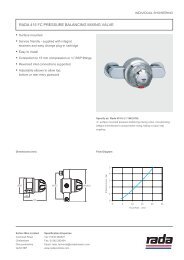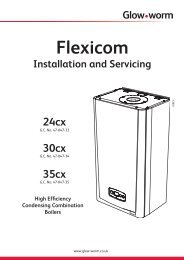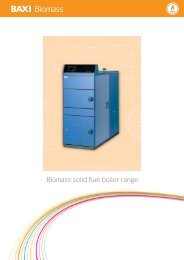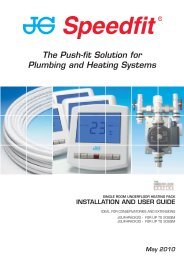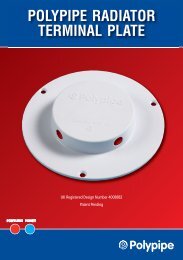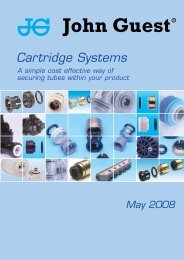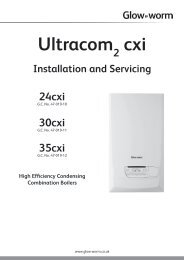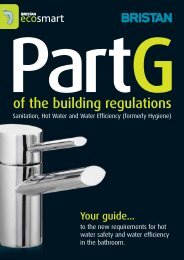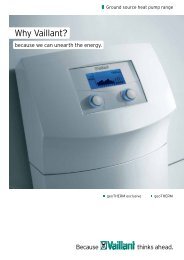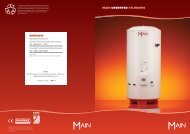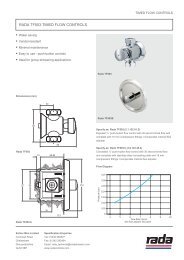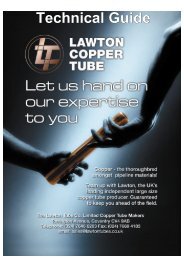Hep20 Technical Handbook
Hep20 Technical Handbook
Hep20 Technical Handbook
Create successful ePaper yourself
Turn your PDF publications into a flip-book with our unique Google optimized e-Paper software.
Hep 2<br />
O ® Precautionary Advice<br />
Trouble Free Installation<br />
of Hep 2 O ®<br />
Most installers that have worked<br />
extensively with Hep 2 O ® will have<br />
experienced the odd problem from<br />
time to time. Based on customer<br />
feedback and over 20 years<br />
experience in dealing with such<br />
occurrences, the following are<br />
simple but effective precautionary<br />
steps that when taken will ensure<br />
trouble free installation.<br />
Potential joint problems can be<br />
divided into two main categories,<br />
and can also be used as the basis for<br />
appropriate specification clauses.<br />
Pipe derived problems<br />
By far the majority of problems<br />
occur because the pipe end inserted<br />
into the fitting has been damaged in<br />
some way. This can create a leak<br />
pathway via the scratch or indent<br />
for water to pass. This type of<br />
damage can occur at various points<br />
along the route to finally<br />
commissioning the plumbing system.<br />
But in general taking a few<br />
precautionary measures can<br />
eradicate any such problems:<br />
• take care in how and where the<br />
product is stored, retain pipe in<br />
protective packaging until it is to<br />
be used.<br />
• never use an open bladed knife<br />
to remove the pipe packaging.<br />
• always use the attached shielded<br />
blade tool to remove packaging<br />
and cut on the inside of the coil,<br />
thus enabling the pipe to be<br />
contained within the packaging<br />
until the last metre.<br />
• when threading pipe through<br />
holes in stone, brick and block<br />
walls always use a pipe sleeve or<br />
alternatively a small piece of foam<br />
pipe insulation to protect the<br />
pipe from the rough surface.<br />
•<br />
ensure exposed first fix pipework<br />
is protected after initial installation<br />
if further connections are to be<br />
made to the pipe. By simply<br />
pushing a temporary end<br />
protector onto the pipe, it ensures<br />
that no debris will enter the pipe<br />
and furthermore it will protect the<br />
pipe end from damage.<br />
Fitting derived problems<br />
Problems can arise for a number of<br />
reasons, such as grit or debris<br />
ingress into the joint prior to<br />
coupling, or sometimes the<br />
inadvertent omission of an integral<br />
component part of the joint due to<br />
past interference by the installer or<br />
a possible third party. Again taking a<br />
few general precautionary measures<br />
can eradicate any such incidents:<br />
•<br />
store materials in a secure place<br />
free from dust and dirt etc.<br />
•<br />
keep fittings in their bags until<br />
ready for use.<br />
•<br />
when fittings are de-mounted<br />
ensure they are correctly reassembled.<br />
•<br />
do not take joint components<br />
from new fittings to replace<br />
damaged or lost components in<br />
other fittings.<br />
•<br />
always follow the do and don’t<br />
guidelines leaflets included with<br />
all bags of fittings.<br />
✔<br />
✖<br />
✖<br />
✖<br />
Where Not to Use Hep 2 O ®<br />
The Hep 2 O ® system has been<br />
designed and tested to meet the<br />
requirements of modern heating<br />
and water distribution systems.<br />
Testing has not been carried out to<br />
determine suitability for other<br />
purposes and therefore should not<br />
be used for instance, in the<br />
following applications:<br />
• conveyance of gas.<br />
• conveyance of fuel oil.<br />
• in areas contaminated by<br />
petroleum and oil derivatives.<br />
• compressed air.<br />
• Hep 2 O® is not suitable for use<br />
in systems where the water<br />
carried in the pipe contains a<br />
high concentration of chlorine<br />
e.g. swimming pools or<br />
decorative water features.<br />
• Hep 2 O® will not be affected by<br />
those levels of chlorine expected<br />
in UK water supply (typically less<br />
than 0.5ppm). Short term<br />
chlorination for disinfection will<br />
not have an adverse effect on the<br />
system. See page 44.<br />
• Hep 2 O® should only be used for<br />
the secondary circulation of a solar<br />
heating system, not for a primary<br />
circuit as temperature cannot be<br />
thermostatically controlled.<br />
• Hep 2 O® should be protected at<br />
all times from exposure to direct<br />
sunlight and ultra violet light.<br />
• Hep 2 O® should not be installed<br />
in ringmain installations.<br />
A ringmain is a water-replenished<br />
circulating system maintained at a<br />
constant high temperature to<br />
provide a permanent source of hot<br />
water to its distributing pipes.<br />
Typical locations where ringmain<br />
systems are used are hospitals or<br />
hotels which distribute constant hot<br />
water to wards or rooms at a<br />
distance from heat source.<br />
This restriction does not apply to<br />
domestic systems operating<br />
intermittently at temperatures less<br />
than 65°C where a design life of 50<br />
years as detailed in BS 7291: 2001<br />
can be expected.<br />
91



